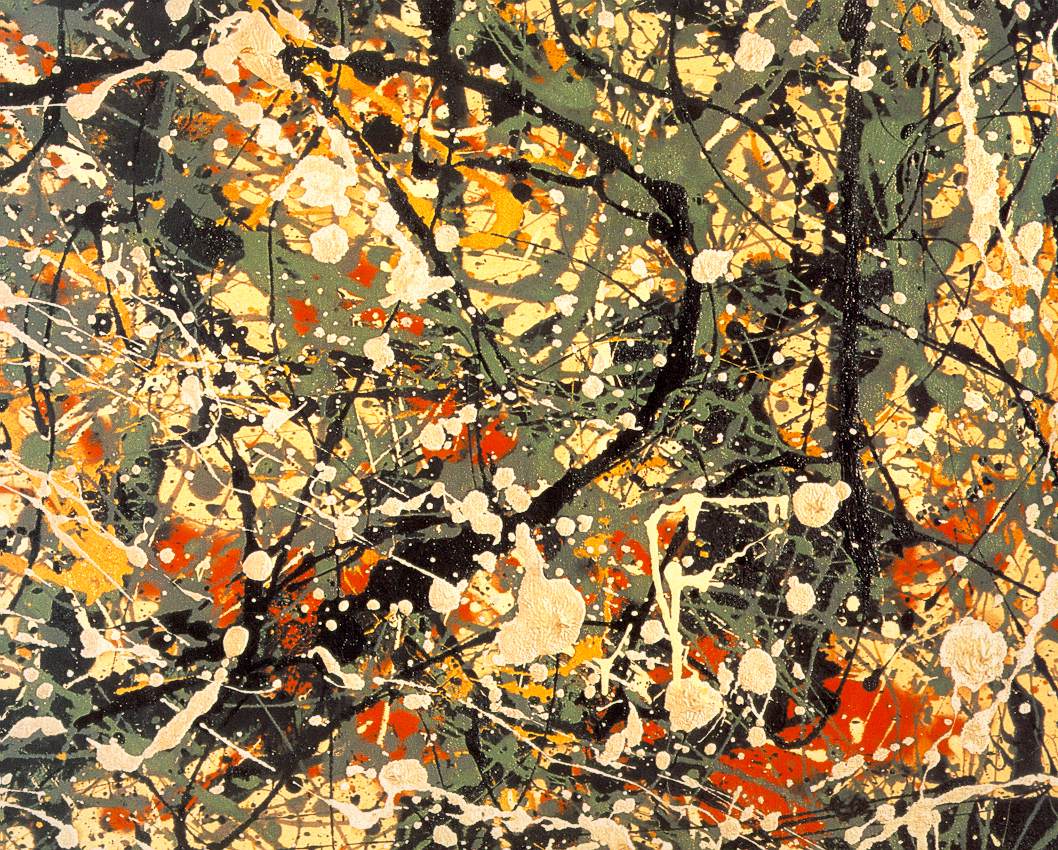
At first glance, one might wonder what is Pollock trying to convey in this painting. At first glance, it looks to be no more than a random mishmash of color. At first glance, it appears to reflect an absence of thought and rationality.
If we understand the pressures under which Pollock labored for most of his life, if we can grasp the angst that drove him to frequent bouts of turmoil and despair, if we can see how much his art reflects the heart of a troubled but highly visionary individual, we can perhaps comprehend. Though the art of the more bygone past certainly reflected the inner worlds of its creators, in Jackson Pollock we see art that endeavors to present an artist's inner world as it more deeply is, as the artist directly experiences it, as he meditates and responds to who he is in a bewildering world. It is life, it is death: it is existence.
Though Pollock died in 1956, his art endures. It's art as perhaps art, in the fractured planet on which we live today, most is. It's art that reminds us that life is more than what we imagine it to be. It's art that, rightly viewed, underscores the necessity of transcendence, and that, without transcendence, life is no more than what our personal angst makes it to be. It comes, it goes, and it is no more.
It's a hard way to go.
No comments:
Post a Comment